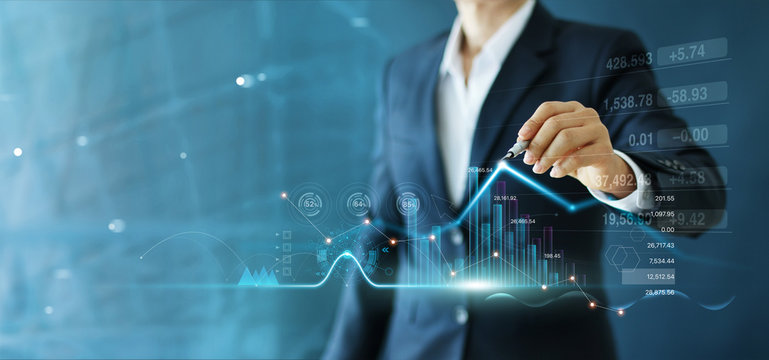Ecological Footprint Calculator for Companies


Why Should You Calculate Your Company's Ecological Footprint?
What Is an Ecological Footprint Calculator and What Is It For?
Why Is It Important to Measure Your Company’s Ecological Footprint?
5 Benefits of Using an Ecological Footprint Calculator in Your Company
Why Your Ecological Footprint Calculator Should Be a Business Tool (Not Just for Compliance)
Why Use Dcycle to Measure Your Company’s Ecological Footprint
Frequently Asked Questions (FAQs)

An ecological footprint calculator for companies is key if we want to understand and reduce our environmental impact.
Regulations are increasing, customers demand transparency, and companies that fail to act risk being left behind.
Proper ESG data management helps businesses identify operational efficiency opportunities, comply with regulations seamlessly, and access sustainable financing.
This not only reduces costs but also strengthens competitiveness in increasingly demanding markets.
But how can we truly determine how many emissions we generate? This is where an ecological footprint calculator becomes essential.
With the right tool, companies can measure emissions, identify areas for improvement, and make data-driven decisions without getting lost in endless calculations.
Can we do this without digital solutions? Yes, but it would be chaotic.
Automating measurement optimizes processes, prevents errors, and facilitates ESG compliance, allowing companies to focus on what really matters: turning ESG management into a strategic advantage that enhances competitiveness."

Companies that efficiently structure their ESG data:
It's not just about compliance.
Managing ESG data manually is inefficient and error-prone. Digital solutions allow companies to automate processes and make decisions based on reliable data. This process automation is key to maintaining accuracy and scalability.
Companies that integrate ESG into their strategy don’t just avoid penalties, they also differentiate themselves, attract investors, and create new business opportunities.
Where to start? The first step is to understand what we measure and why it matters.
Experience our platform firsthand, schedule a demo.
An ecological footprint calculator measures a company's total environmental impact, analyzing resource consumption, waste generation, and emissions.
Its function goes beyond quantification, it helps identify cost-saving opportunities and ensures compliance with ESG criteria without compromising efficiency.
Can these calculations be done manually? In theory, yes, but the process would be slow and prone to errors.
Digital solutions allow for automation and real-time decision-making based on accurate data.

When discussing environmental impact, these terms are often confused.
Each one measures a different aspect, but together, they provide a comprehensive view of a company’s effect on the planet.
The broadest measure. It calculates the natural resources a company consumes and whether the planet can regenerate them, including land, water, energy, and emissions.
In simple terms, it shows whether we are consuming more than Earth can replenish.
This metric focuses exclusively on greenhouse gas emissions, mainly CO₂.
Understanding what the carbon footprint is and how it affects environmental sustainability is essential for companies aiming to reduce their climate impact and comply with regulations such as ISO 14067 or the GHG Protocol.
It also plays a crucial role within the broader scope of the supply chain, where each stage contributes to the total environmental impact."
This includes not only the direct water usage but also the water needed to manufacture products or generate energy.
Understanding water footprint helps companies optimize processes and cut costs in critical resource consumption.
It depends on the industry and business goals.
However, for a comprehensive approach, the ecological footprint provides the most complete picture of a company’s environmental impact.

What isn’t measured cannot be optimized.
Accurate ESG data enables strategic decision-making, enhances competitiveness, mitigates risks, and ensures compliance with key regulations.
But what are the real benefits of measuring ESG data? More than you might think: avoiding penalties, cutting costs, and improving market positioning.
Regulations are constantly evolving, and companies that manage ESG data effectively don’t just avoid fines, they also position themselves to leverage incentives and enter stricter markets.
Standards such as ISO 14067 and the Environmental Liability Law are already shaping the industry. Are we prepared to comply?
Optimizing ESG management does more than ensure compliance, it boosts profitability.
Companies that structure their ESG data:
Can we reduce our impact and save money at the same time? Absolutely.
Consumers and investors no longer focus solely on price.
Sustainable businesses have more opportunities and build greater trust in the market.
A strategy based on real data sets companies apart from competitors and unlocks access to high-demand markets.
The process is simpler than it seems.
An ecological footprint calculator automates measurement so we can focus on what matters most: reducing our impact.
Everything starts with data. The most relevant areas to measure include:
To ensure accurate calculations, international standards are used:
Managing ESG data manually is inefficient and error-prone.
Digital solutions allow companies to automate processes and make decisions based on reliable data.
Dcycle enables businesses to automate the collection and distribution of ESG data, ensuring alignment with key regulatory frameworks such as CSRD, SBTi, the EU Taxonomy, and ISO standards.
This facilitates regulatory compliance and enhances strategic decision-making across all industries.
If we want to meet ESG criteria without complicating our processes, why not start with a solution that makes it easier?

Getting an ecological footprint calculator is just step one.
What really matters is how you put it into action.
Many companies expect the tool to magically solve all their ESG challenges. But without a clear strategy, even the best platform won’t deliver results.
Let’s break down the most common mistakes we’ve seen, and how to avoid them.
A major misconception is that the calculator will manage your footprint on its own.
Reality check: If your processes are a mess, no tool will fix that.
You still need clear responsibilities, reliable data, and a structured approach.
The calculator supports your work, but it doesn’t do it for you.
Buying a calculator and continuing to use spreadsheets or scattered email approvals is a dead end.
You can’t modernize ESG with outdated tools.
All your workflows, data collection, and reporting need to move into the platform.
If it’s not in the system, it doesn't count.
If only your ESG or quality team uses the tool, it will quickly lose relevance.
Ecological data comes from everywhere: operations, procurement, logistics, finance.
Everyone should contribute and take ownership.
Start by involving all relevant departments.
Most platforms come loaded with features: emissions, waste, water, lifecycle analysis...
You don’t need everything on day one.
Start with the essentials, data collection, basic calculations, regulatory reports.
Then build up. Quick wins build trust.
Can you prove where your data came from, who entered it, and when?
Without traceability, your reporting is risky.
Audit trails are non-negotiable.
The system must record every change and action.
CSRD, ISO 14067, the EU Taxonomy, your footprint data is useful beyond just one report.
Don’t get stuck with single-purpose tools.
Choose platforms that reuse the same data across multiple ESG frameworks.
A footprint calculator isn’t a vault. It’s a decision-making engine.
The platform should help you act:
Otherwise, it's just another reporting burden.
Even the best tool fails if no one knows how, or why, to use it.
Training is not just about clicking buttons.
People need to understand why this matters, what’s expected of them, and how it helps their daily work.
Why are you measuring your footprint? To cut costs? Win bids? Improve efficiency?
Align the tool with those business goals.
Data without a purpose won’t move the needle.
Some companies launch the tool, configure it, and stop there.
But ESG isn’t static. It evolves.
Your platform should grow with you, adapt to new regulations, and support long-term goals.
Start with clarity:
Roll it out in phases:
Track usage, not just KPIs:
Who logs in? Who completes tasks? Who updates data?
This shows you where things are working, or getting stuck.
Make it practical, not just compliance-driven:
If it doesn’t save time or simplify reporting, people won’t use it.
A good tool helps your teams, not just your auditors.

Measuring ESG performance is not just an obligation, it is a key tool for ensuring business competitiveness.
Companies that structure ESG data accurately can improve operational efficiency, attract investment, and expand into more demanding markets.
With the right solution, businesses can turn ESG compliance into a strategic advantage that drives growth and resilience.
Environmental regulations are becoming stricter.
Standards such as ISO 14001 and ISO 14064 require accurate measurement of ecological footprint.
Automating this process makes it easier to meet regulatory requirements, avoid penalties, and improve positioning in sustainable markets.
Do we really know how many resources we are wasting?
An ecological footprint calculator helps identify inefficiencies and optimize energy, water, and material consumption.
Reducing environmental impact is not just an ethical choice, it also lowers costs and increases profitability.
Companies with well-defined ESG strategies gain a clear competitive advantage, accessing new markets, strengthening reputation, and attracting investors looking for sustainable and profitable business models, often reflected in higher stock valuations.
Measuring ecological footprint demonstrates a real commitment to ESG principles and helps stand out from competitors by promoting sustainable governance.
Access to funding and tax benefits is increasingly linked to ESG performance.
Companies with structured ESG strategies can gain competitive advantages and lower operating costs.
By measuring our footprint and setting reduction plans, we can access incentives and improve long-term financial stability.
Companies that effectively manage their ESG impact not only strengthen their reputation but also attract top talent aligned with responsible and profitable business models.
A measurable commitment to ESG criteria makes companies more attractive to consumers and skilled professionals.
Ready to unlock efficiency? Schedule a demo.

Despite the benefits, many companies struggle to get started.
What are the main obstacles, and how can we overcome them?
Not all companies know where to begin.
The lack of technical knowledge makes it difficult to implement effective environmental strategies.
The solution is to use intuitive tools and specialized support, making the process easier without requiring deep sustainability expertise, especially important for small and midsize enterprises that may lack internal resources.
There is a perception that measuring ecological footprint is expensive.
But is it really?
While there is an initial investment, the savings in resources and financial benefits outweigh the costs over time.
Additionally, there are funding options available to support this transition.
Not all solutions are easily adaptable to daily operations.
How can we ensure that measurement doesn’t become a burden?
Digital solutions like Dcycle help automate processes and simplify data collection, making ecological footprint measurement practical and efficient.
Measuring our footprint does not have to be complicated.
With the right solutions, we can turn a challenge into a competitive advantage.

Measuring environmental impact is not just an obligation, it’s an opportunity to improve efficiency and competitiveness.
Many companies still see this as a challenge, but with the right solutions, it can become a simple and profitable process.
Manual calculations no longer make sense. Automating measurements saves time, prevents errors, and allows companies to make data-driven decisions.
With solutions like Dcycle, businesses can calculate their ecological footprint in minutes, without unnecessary complications or endless paperwork.
We know that measuring alone is not enough. How do we move into action?
We can’t reduce what we don’t measure. The first step is to identify emissions and critical areas.
Reducing energy consumption, optimizing logistics, or investing in renewable energy can make a huge difference in a company’s decarbonization efforts.
Customers and investors value transparency. Measuring and sharing progress strengthens credibility and reputation.

If we want to be sustainable, we must act now.
Energy, transport, materials... Where do we generate the most emissions?
Life Cycle Assessment (LCA) and customized emission factors are among the most widely used methods.
Measuring manually is chaotic. Platforms like Dcycle automate the process, making it fast and accurate.
Measuring alone is useless if we don’t act. Setting concrete targets helps create a more efficient and competitive company.
Measuring the ecological footprint is not complicated if we use the right solutions. Are we ready to start?
No more guesswork: schedule a demo.
A good calculator doesn’t just measure. It helps you make decisions, save money, and gain a competitive edge. If you're only using it to check a regulatory box, you're missing the point.
Most footprint calculators give you the numbers. They tell you how many tons of CO₂ you emit, how much water you consume, or how much waste you generate.
But they don’t tell you what to do with that data. That’s where they fall short.
A truly useful calculator connects data to action: switching suppliers, redesigning processes, optimizing logistics, or choosing lower-impact materials.
Data without action is just paperwork.
If measuring your footprint means chasing spreadsheets and collecting scattered files, you’re already doing it wrong.
Automation isn’t a nice-to-have, it’s essential.
A calculator that automates ESG data collection and validation lets you:
Instead of racing to catch up, you can plan ahead with confidence.
Environmental impact increasingly translates into real costs: carbon pricing, energy inefficiencies, lost bids, or reputational risks.
A smart calculator links environmental data to financial outcomes, so you can see the real cost of each ton of CO₂ or cubic meter of water.
That means you can prioritize actions that cut emissions and boost your margins.
Having data is great but not if you have to manually adapt it to every regulation or client request.
A reliable calculator:
The goal is to simplify, not complicate.
If your calculator only focuses on one product or process, you’re only seeing part of the problem.
You need a solution that lets you:
That’s how sustainability becomes a real business lever.
Not all tools that promise to calculate your ecological footprint are created equal.
Many stop at a surface-level number, without helping you understand it or improve.
Picking the right solution makes the difference between just having data… or turning it into a real competitive advantage.
Measuring is a good start.
But what truly matters is how that data supports smarter decisions.
A strong footprint calculator doesn’t just tell you how much you emit.
It tells you where that impact comes from, what you can do to reduce it, and how it affects your operations, costs, and strategy.
If it’s not driving action, it’s just more reporting noise.
Most tools are designed with big corporations in mind, assuming large ESG teams and endless budgets.
But real businesses come in all sizes.
Small and mid-sized companies also need to comply, reduce impact, and improve efficiency.
The right solution is one that you can use on day one, without hiring consultants or getting lost in technical jargon.
You can’t use the same template for a manufacturer, a logistics company, and a tech firm.
Each sector has different pain points and emissions sources.
Your tool should let you customize emission factors, processes, and operational units based on your real business.
If it doesn’t reflect what you actually do, the data is useless.
You might need a CSRD report today, a supplier audit tomorrow, and a climate risk disclosure next year.
You shouldn’t have to start over every time.
A good platform should:
If you need a 20-hour training just to use the platform, that’s a red flag.
The tool should be clear, intuitive, and user-friendly.
Anyone in the company, finance, operations, procurement, should be able to access and understand the data.
If only the sustainability lead can use it, you’re wasting its potential.
You shouldn’t need to reinvent your operations to track your footprint.
A solid tool integrates with your ERP, accounting, logistics, or procurement platforms.
This saves time, cuts errors, and enables automatic updates and reporting, no more chasing spreadsheets.
The end goal isn’t compliance.
It’s making your company stronger.
A valuable calculator is one that lets you:
If it just gives you numbers but not direction, it’s missing the point.

Measuring your ecological footprint shouldn’t be a hassle. Dcycle is the solution that turns a complex process into a real business advantage.
Dcycle connects with trusted environmental databases like Ecoinvent, ICE, and EPD, and automates data collection from your internal sources, energy use, transportation, materials, waste...
No Excel files, no manual errors, no endless back-and-forth.
With Dcycle, you can calculate your company’s ecological footprint in just a few minutes.
The time you used to spend chasing data or editing reports now goes into making smart decisions.
Dcycle doesn’t just measure. It generates reports aligned with CSRD, SBTi, the EU Taxonomy, ISO 14067, EINF, and more.
This saves you time and ensures your reporting meets the expectations of auditors, clients, and investors.
Once your data is in Dcycle, you can reuse it for multiple needs:
No duplication. No recalculating. Just clear, usable data.
You don’t need to be a sustainability expert.
Dcycle is made so that any team, operations, finance, procurement, can access and use ESG data with ease.
Measuring ESG performance raises many questions: Which indicators matter most? How can we comply with regulations without complications?
Using a platform like Dcycle streamlines the process and ensures accuracy in reporting.
Here, we answer the most common questions to help companies take the first step.
It depends on the industry, but generally, we need information on:
The more data we have, the more accurate the calculation and the better the decisions we can make.
It depends on the country and industry. More and more regulations require companies to measure and reduce their environmental impact.
Laws such as ISO 14001 and ESG reporting regulations make footprint measurement essential to avoid penalties and stay competitive.
Measuring is only the first step. The key is taking action. Some effective strategies include:
The key is to define a clear action plan with measurable goals and continuous monitoring.
There are many options, but Dcycle simplifies and accelerates the process.
Carbon footprint calculation analyzes all emissions generated throughout a product’s life cycle, including raw material extraction, production, transportation, usage, and disposal.
The most recognized methodologies are:
Digital tools like Dcycle simplify the process, providing accurate and actionable insights.
Some strategies require initial investment, but long-term benefits outweigh costs.
Investing in carbon reduction is not just an environmental action, it’s a smart business strategy.